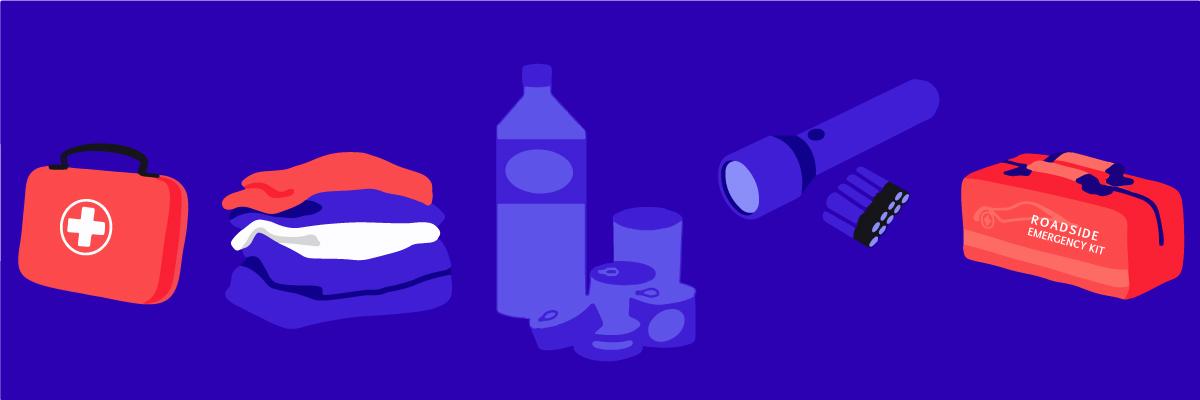Safety Tips for Sleeping in a Car: Staying Secure and Comfortable

Picture this: You’re on a long-distance road trip and are in serious need of shut-eye. Or you’re camping, and there’s a sudden downpour. Or maybe you just unexpectedly find yourself without a place to sleep for the night. Whatever the case, there’s a solution: sleeping in your vehicle. (You’ll find safety tips for sleeping in a car in this article, so read on.)
Sleeping in your car is a convenient option that’s easy on the wallet, too. However, safety risks are associated with catching zzzs overnight in your ride. In some cases, you’ll likely be sleeping in unfamiliar territory. Another thing to consider is comfort. So, taking the necessary precautions and preparing your car for a safe (and comfortable) night’s sleep is essential.
This comprehensive guide aims to give you the information and strategies to sleep safely and soundly in your car.
Let’s get started.
Key Takeaways
-
Prepare your car for safe and comfortable overnight sleeping by decluttering the interior, inspecting your vehicle, and parking in a well-lit, populated, and legal location.
-
You can sleep comfortably in your car by wearing the proper clothing, regulating the temperature, and blocking light and noise.
-
When selecting a parking spot to sleep in your car, consider local laws, security measures, designated camping areas, and more.
Table of Contents
How Do I Prepare My Car for Safe Sleep?
First, we will tackle preparing your car for safe and comfortable zzzs.
-
An essential aspect of this is decluttering and organizing, which involves clearing out the inside of your car of anything unnecessary. Store items in the trunk. You need space for sleeping and to minimize potential hazards. Store valuables such as your phone, wallet and laptop inside your car to keep them close.
-
Before you bunk down for the night, thoroughly inspect your car. Check if your locks, lights and windows are functioning. Also, before setting out on any road trip, do the smart thing and check for any maintenance needs. You’ll never know when the need to sleep in your car will arise. Safety first!
-
Choose where you park carefully. Pick in well-lit, populated areas near other cars or buildings. Secluded or deserted places can increase safety risks. (More on where to park later, so keep reading.)
Is It Safe to Sleep in a Car with the Aircon On?
Many wonder if it’s safe to sleep in the car with the AC on. Whether it’s overnight or a nap, the answer is: “No.” The risk of carbon monoxide buildup can be hazardous and even fatal in some cases.
Fumes can enter your car through leaks in your exhaust system. Carbon monoxide can’t be seen or smelled. That’s why sleeping in the car with the AC on isn’t advisable. The safe way to sleep in your vehicle is with the engine off.
If you’re wondering, Jerry says sitting in an idling car with the AC on during instances like traffic is safe. That’s because you’re outside(1).
How Do I Sleep in Different Areas of a Car?

You can sleep inside your car in the driver's, passenger's, or back seat. You can use the cargo area if you have an SUV or van.
-
One option is to recline the front seat, which is ideal for traveling with someone. To do this, you need only fully recline the driver’s and passenger seats. A travel pillow and a blanket help keep things comfortable.
-
Use the back seat if the front or passenger seats are cramping your style. You’ll need to sleep diagonally, and a travel pillow is helpful for comfort. (Air mattresses designed for SUV backseats are also available.)
-
If you drive an SUV or a van, utilize the cargo area. You can use a camping or air mattress designed for cargo areas.
Whichever area of your car you choose, you can make this more comfortable by using car sleeping accessories, such as an excellent sleep mask, to block out external light sources.
What’s the Safest Way to Sleep in a Car: Helpful Tips for Security and Comfort
We won’t lie. Sleeping in a vehicle is challenging, especially when it comes to comfort. It’s a far cry from sleeping in your bed, but it doesn’t have to be unpleasant. Here are some tips for getting comfortable sleep in your car:
-
If you have the option, choose clothes that are loose and breathable. Tight clothing is restrictive and uncomfortable, making it hard to drift off or stay asleep.
-
Regulate the temperature inside your car by slightly opening the windows or sunroof. If you’re in unfamiliar territory, avoid opening your windows fully — just enough to provide ventilation without allowing animals or people easy access.
-
As mentioned earlier, external light sources can make it hard to catch decent zzzs. In addition to using a sleep mask, invest in car window shades or blankets to block out light.
-
Noise can also pose a problem to getting decent sleep. Use a comfy pair of earplugs to block out disruptive sounds — if you’re parked in a safe area. (But if you’re in any doubt about the safety of your surroundings, it’s easier to ditch the earplugs, so alarming sounds can quickly wake you.)
-
Take some time to stretch and move around before you turn in. Stretching and movement will minimize your stiffness when waking up.
-
Engage in meditation or deep breathing exercises to ease the anxiety or stress you might feel about sleeping in a car and unfamiliar surroundings.
Where Do I Park to Sleep Safely?
You already know to choose a well-lit and populated area for parking and sleeping. However, there are other factors to consider. Here are a few:
-
Before parking and catching zzzs, ensure that the spot you pick doesn’t prohibit sleeping in vehicles. Research local laws and regulations on overnight parking first.
-
Choose spots with security measures, such as surveillance cameras or someone patrolling the area. These measures will act as an additional security blanket to keep you safe while you sleep in your car.
-
If you’re car camping, ensure it’s in a designated area. Some parking lots or roads allow you to camp in your car. Again, do your research beforehand.
-
Park on level, flat ground to make sleeping more comfortable. It’s also easier on your brakes and suspension.
-
Take note of the proximity of bathrooms, gas stations or convenience stores. Pick a spot near amenities so your basic needs are easily fulfilled.
By carefully selecting the right location, you'll enhance your safety and make sleeping in your car more comfortable and enjoyable.
Is It Legal to Sleep in a Car?
It’s legal to sleep in your car with specific considerations. However, apart from familiarizing yourself with the area’s local laws and ordinances on overnight parking, there are other things to consider:
-
You should never park and sleep in your car on private property without first asking permission. Doing so risks trespassing, which could have legal implications.
-
If you’re in a national forest, park, or other public land, research the regulations and obtain permits or passes when necessary.
-
One thing to consider when sleeping in a designated camping area is the rules on car camping overnight. Not all camping areas allow you to camp in a vehicle or have specific rules. Do your research and comply with the regulations.
-
The golden rule is to respect others and your environment. Don’t litter or cause a ruckus, which may lead to complaints or even legal issues.
What You Need to Keep in Your Car for Emergencies

Whether you plan to sleep in it or not, there are items you should keep in your car for emergencies.
Here’s a list of what you’ll need:
-
Carry a complete first aid kit. You’ll be equipped to deal with medical emergencies. According to the American Red Cross, key items include adhesive bandages, antiseptic wipes, a bleeding control kit with a tourniquet, medications, and antibiotic ointment (or spray), to name a few(2).
-
Keep essential emergency supplies, like a flashlight, batteries, a basic tool kit and a multi-tool for minor repairs.
-
Keep blankets and warm clothing in your car. These will help you stay warm when temperatures drop without warning and for emergencies that require warmth.
-
Keep a stash of non-perishable food and bottled water in your car. You may find yourself in locations that don’t have convenience stores nearby.
-
Keep a roadside assistance kit in your car. This kit should include flares, reflective triangles, and jumper cables. It’ll help you get quicker assistance and alert others of any road hazards caused by your vehicle.
Conclusion: Enjoying a Safe and Comfortable Night's Sleep in Your Car
Getting a decent night’s rest in your vehicle is possible, but you must prioritize security and comfort. We hope these safety tips for sleeping in a car help you enjoy your next road trip, car camping expedition or when you least expect it.
Remember to prepare your car for safe sleeping. Choose a safe and legal location and store specific items, including sleeping accessories, in your car for emergencies. These can make all the difference in bunking in your vehicle safely and comfortably.
If you found this article helpful or would like to share more safety tips for sleeping in a car with other readers, comment below.
Sources:
(1) "Is it Bad to Idle Your Car With the AC On?” Jerry, www.soundly.com/blog/white-noise-and-alternatives. Accessed 26 September 2024.
(2) “Vehicle Kit Essentials: Must-Have First Aid Items for On-the-Go Safety.” American Red Cross, www.redcross.org/take-a-class/resources/articles/vehicle-kit-essentials. Accessed 26 September 2024.
Disclaimer: The information contained in this website or provided through our blog, e-mails, or programs is for informational purposes only. It is not intended to be a substitute for medical advice, diagnosis or treatment that can be provided by your healthcare professionals.












































